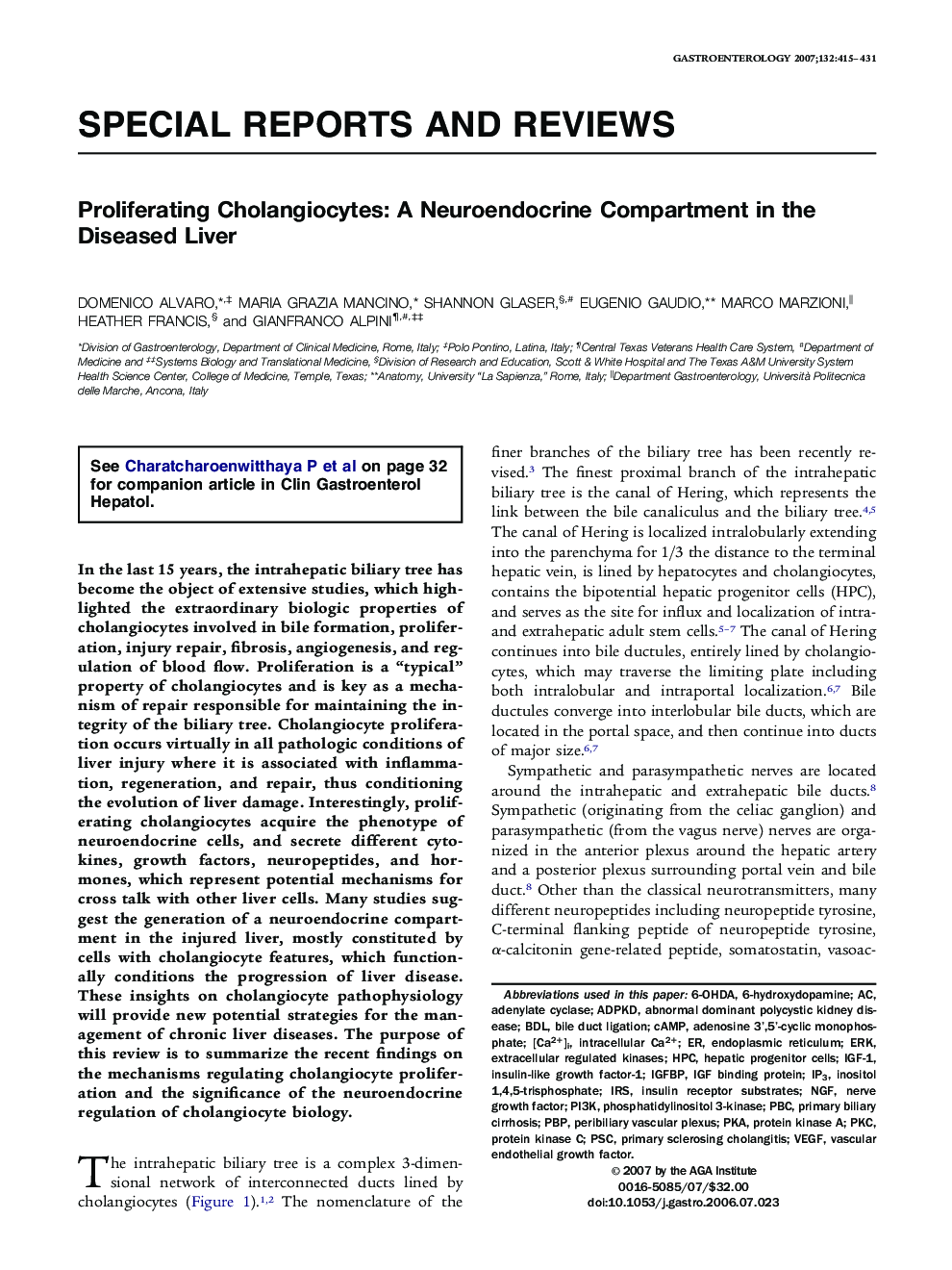| Article ID | Journal | Published Year | Pages | File Type |
|---|---|---|---|---|
| 3296335 | Gastroenterology | 2007 | 17 Pages |
In the last 15 years, the intrahepatic biliary tree has become the object of extensive studies, which highlighted the extraordinary biologic properties of cholangiocytes involved in bile formation, proliferation, injury repair, fibrosis, angiogenesis, and regulation of blood flow. Proliferation is a “typical” property of cholangiocytes and is key as a mechanism of repair responsible for maintaining the integrity of the biliary tree. Cholangiocyte proliferation occurs virtually in all pathologic conditions of liver injury where it is associated with inflammation, regeneration, and repair, thus conditioning the evolution of liver damage. Interestingly, proliferating cholangiocytes acquire the phenotype of neuroendocrine cells, and secrete different cytokines, growth factors, neuropeptides, and hormones, which represent potential mechanisms for cross talk with other liver cells. Many studies suggest the generation of a neuroendocrine compartment in the injured liver, mostly constituted by cells with cholangiocyte features, which functionally conditions the progression of liver disease. These insights on cholangiocyte pathophysiology will provide new potential strategies for the management of chronic liver diseases. The purpose of this review is to summarize the recent findings on the mechanisms regulating cholangiocyte proliferation and the significance of the neuroendocrine regulation of cholangiocyte biology.
